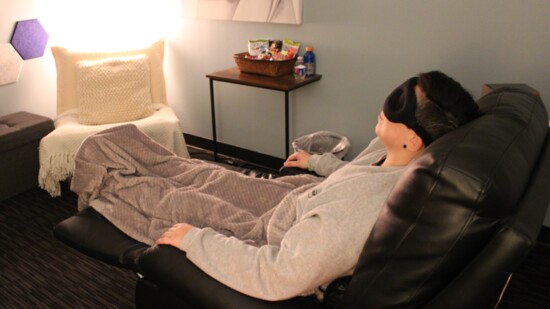Using ketamine-assisted therapy to treat chronic mental health issues has become increasingly popular across the nation, according to the nonprofit American Society of Ketamine Physicians.
Ketamine is the only legal psychedelic medication available to mental health providers to treat emotional distress, the nonprofit reports, and already, thousands of Austin residents have explored this alternative therapy.
“I had a lot of trauma that went back to my childhood,” Austin resident Amanda said (last name withheld for privacy). “I developed an eating disorder and was the victim of sexual assault by my boss at 28. After being diagnosed with complex PTSD and having suicidal ideations, I sought out ketamine treatments as a last resort.”
Dr. Brent Turnipseed, founder of Roots Behavioral Health, a full-service psychiatric clinic in Austin and a member of ASKP, is leading the way in providing this therapy for depression, post-traumatic stress disorder, anxiety and more. Since opening in 2016, Dr. Turnipseed and his wife, Andrea, the clinic’s executive director, have created an inviting space where patients are treated for a variety of mental health conditions in one of their three Austin-based locations.
Practitioners administer low-dose ketamine infusions paired with psychotherapy. Originally used as an anesthetic during surgery, and often mistakenly attributed to veterinarian medicine, ketamine now shows effectiveness for treatment-resistant depression and PTSD, offering rapid relief by altering brain chemistry, Dr. Turnipseed said.
“We have seen success rates from 50 to 60 percent with this type of treatment,” Turnipseed said.
Patients at Roots are placed in a room with dim lighting, cozy furnishings, a weighted blanket and soft instrumental music to support a calming experience.
The most common side effect is horizontal nystagmus, in which the eyes rapidly move back and forth, which can cause vertigo. Ataxia, defined as clumsiness or difficulty walking, is another concern, but these effects wear off within an hour, Dr. Turnipseed said.
“Doing these treatments saved my life,” Amanda said. “They gave me the space to choose how I reacted to the world rather than my trauma controlling me.”
“We have seen success rates from 50 to 60 percent with this type of treatment.”
